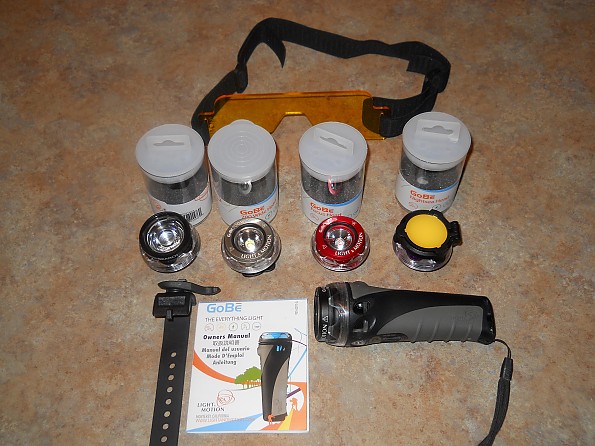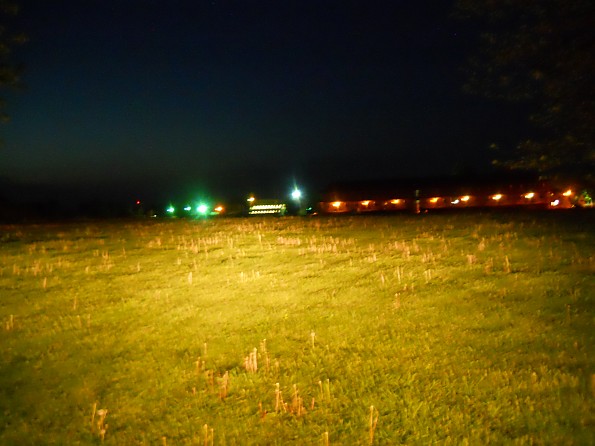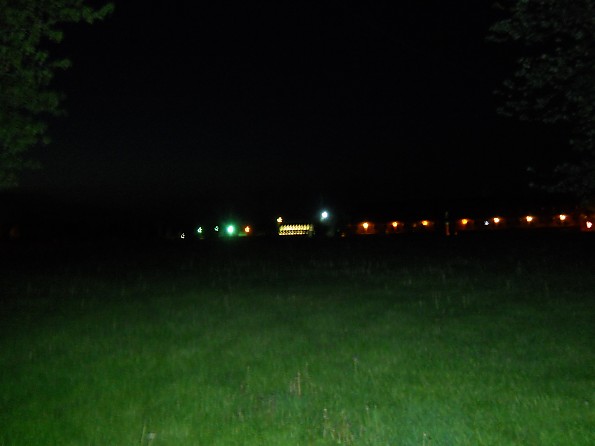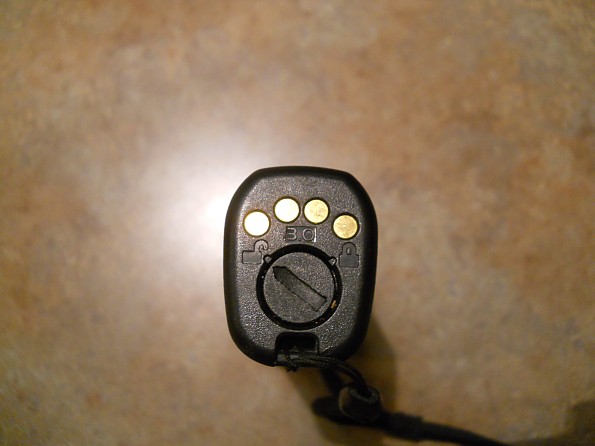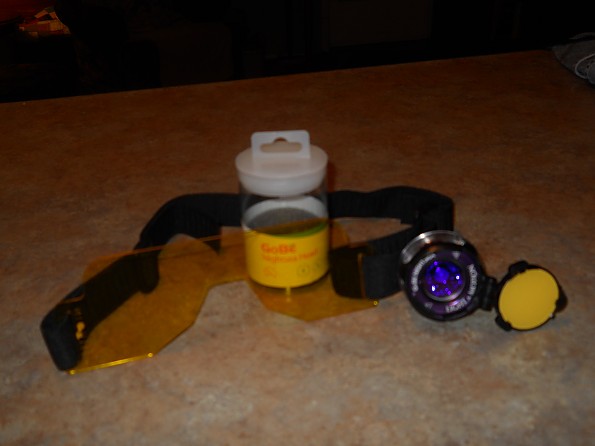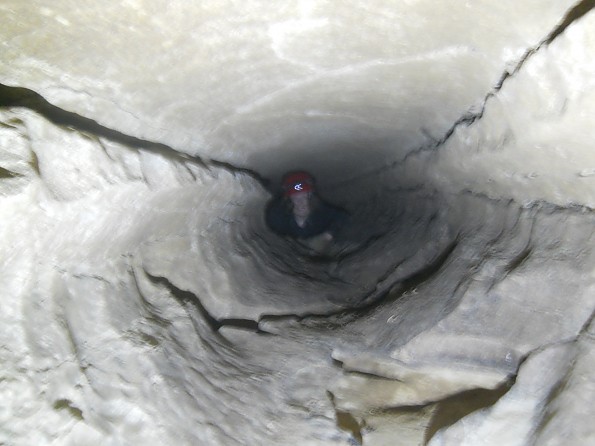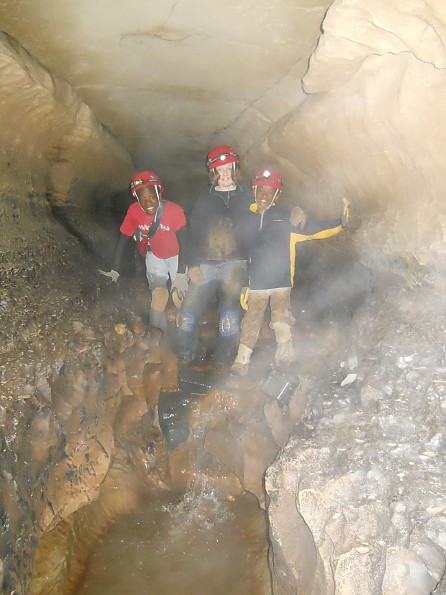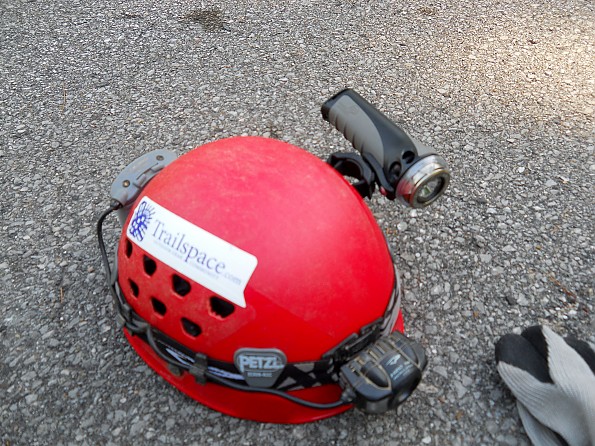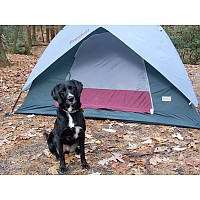Light & Motion GoBe+ 700 Wide
The GoBe+ 700 Wide has been discontinued. If you're looking for something new, check out the best flashlights for 2025.
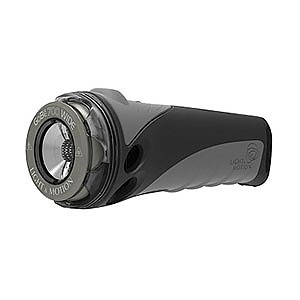
If the Sun is a bit too heavy to carry in your pack, then I would recommend the GoBe+ 700 Wide. It's less weight than the Sun, and it doesn't require sunscreen.
This light throws out a ridiculously bright 700 lumen, 60 degree beam. Designed for divers and adapted for hikers and bikers, this reviewer was asked to test the fuller GoBe+ system in a caving application.
While I have determined caving is not the best use for this light, it is still a quality light in the dark.
Pros
- Ridiculously bright
- 6.75oz (192 grams)
- Compact size
- Dive depth to 120m (394') [untested]
- Attaches to bike handle bars
- Rechargeable, green technology
Cons
- Not hands-free /Not a headlamp
- Price
- Complicated
Note: This reviewer was provided the GoBe+ lighting platform system to test with four different heads/lenses. Each piece of the unit is sold separately. This review will have quite a bit of overlap with the GoBe 500 Search as I discuss the full system.
They still sell them...those giant Maglite flashlights that use 6 D-cell batteries. Those massive billy club-type lights that weigh more than 3lbs and give off 136 lumen with 11 hours of battery time.
Now meet the GoBe+ 700 Wide, with an amazing 700-lumen beam and rechargeable battery packed into an 192-gram hand held unit.
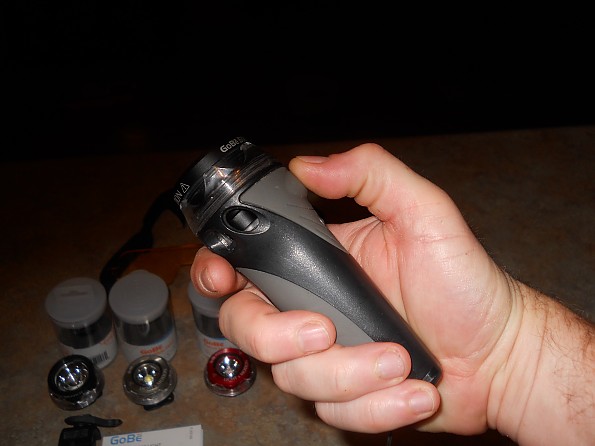
No, you won't be able to beat a criminal into submission with this light, but you might blind him for life...or simply use this light for your outdoor needs.
I'm not a security guard. I'm a caver, and that's where I tested this lighting platform, with three of its lenses:
The Lighting System
First, I should point out there is a difference between the GoBe and the GoBe+. The GoBe uses a 2.2Ah Battery, and will not fully power the 700 lumen lenses. The GoBe+ has a 3Ah Battery and will fully power any of the system. I was provided the “+” unit to fully test all lenses.
Note: Light & Motion contacted Seth at TS, and asked me to clarify that the GoBe WILL fully power the 700 Wide, just with a much shorter battery time. Sorry for for the misinformation.
The GoBe+ system comes with a lot of options. At its core is the light itself. From there, the user has a cornucopia of purchasing choices to change the light's lumen and focus.
Lens options include:
- 500 lumen Search (8 degree beam),
- 500 lumen Spot (20 degree beam),
- 500 lumen Wide (60 degree beam),
- 700 lumen Spot, 700 lumen Wide,
- a 165 lumen red light (called the “Focus,” 60 degree beam), and
- a 750 lumen blue lens (“NightSea,” 20 degree beam) that works with a yellow dive mask insert to bring out the fluorescent nature of undersea life.
I should point out all these lumen are based on the highest settings. Lowest lumen settings are in the 70-100 range, depending on the lens.
Sounds like a lot to choose from? It is. And it's not cheap. The basic unit is $300 and lenses like the Focus are an additional $99. Also, you can't switch from one type of beam to another with a flick of a switch. Heads have to be swapped out. This is not a complicated task, but I have a drawer full of (less powerful) headlamps that go from wide to spot to red depending on which button I push.
Having said that, if you look at each lens as its own flashlight, the confusion diminishes substantially.
This reviewer was provided the 500 Search, 700 Wide, red Focus, and blue Night Sea lenses. The blue light was sent to see what it would do with cave formations.
Also pictured above (bottom left) is an adapter to attach the GoBe to a bike's handle bars. For comparison, I took the same pictures with no flash. The first picture is a field using my truck's headlamps (low beam). The second pic is the 700 wide on high beam. Before you write it off, remember this is a hand-held flashlight being compared to dual truck headlamps. (See my review on the 500 Spot for those comparison photos.)
Safety Lock: On the back of the unit is a switch lock system that prevents the light from accidentally being turned on in a user's pack.
Charging
The four gold circles in the above pictures are the charging contacts. Charging is done using a USB cable. The light cannot be used while charging. Charging times vary based on amperage. Plugged into a .5 Amp computer USB port takes the GoBe+ a full 6 hours of charging. At 2 Amps, the GoBe+ fully charges in 3 hours.
A nice feature of the GoBe is that while it is charging, the user can push and hold the “on” switch. The charging light will change color to indicate what amperage the light is charging at. This allows the user to know how fast of a charge is taking place. The Lithium Ion battery does not develop a "memory," and Light & Motion states it is fine to charge/disconnect a partially filled light for use.
Battery Status
Another nice feature is the indicator light behind the “on” switch. The color of this light indicates battery status. Green is 100-50%; Yellow is 50-25%; Red is 25-10%: Blinking red is 0-10%. In the latter stage, the light will automatically shut off, but after a few seconds can be turned back on in “extended mode.”
Battery life for the 700 Wide is:
- High (700 Lumen): 1.5 hours
- Med (325 Lumen): 3 hours
- Low (100 Lumen): 12 hours
- Extended (50 Lumen): 24 hours
In addition, there is a flashing “SOS” setting that shines at 100 lumen and lasts 36 hours.
NightSea Lens
Having this lens makes me want to take up diving on the Great Barrier Reef. It seems to be such a cool concept. Combined with a yellow insert for a dive mask, the blue light brings out the fluorescence of undersea life. When a diver needs normal light, the snap close filter switches from blue to yellow.
The thought was the NightSea lens might bring out minerals in cave walls. I was eager to test this. As the video above shows, it didn't work out in the cave I was testing in. Mineral content is different in caves, based on the region. So there might be something to this in a different location.
I would love to see a Trailspace tester dive with this lens and provide a review!
Testing in a Cave
For everything “pro” about this light, it can't overcome the “con” of not being hands-free. Until this test, I didn't realize how much I use my hands to move through caves. I specifically picked a cave with more walking than crawling. However, even in walking passages, I'm frequently balancing myself along the passage walls. It was impossible to do any kind of climbing or descending without switching over to my headlamp.
Crawling with the light in my hand was difficult and kept the beam from shining where my eyes naturally look. Had I not been testing the light for Trailspace, I would have stowed it away after a few minutes and gone back to my Princeton Tec Apex headlight. At home I tried unsuccessfully to find a way to attach it to my helmet
But to be fair, this is not a caving light. It's not marketed as a caving light (Well, cave diving, but that's a different sport altogether.). We (Trailspace staff and I) just wanted to see how it would do in a cave. It's a great light! Light & Motion just needs to find a way to attach it to a caving helmet!
This con is also a consideration in hiking with trekking poles. You can't use both at the same time.
Here are some pics taken with the GoBe+ 700 Wide and no flash on a cheap Nikon camera. I want to point out that I have never successfully taken pictures in a cave without both the camera flash and headlamps shining.
In Conclusion
I would love to see a dive test/review on this light, because that's where it appears to be best applied. It's a great flashlight. It's well made. It's brighter than anything I have ever used. And it's reasonably lightweight to throw into a backpack (or use as an emergency backup light in a cave).
However, it's a $300 flashlight (and the additional lenses are around $100 each). Even while night hiking, my $15, 43-lumen headlamp has served me well for several years. Caving lights can cost this much, but they're hands-free. If GoBe ever makes a version of this light to attach to climbing/caving helmets, I'd seriously consider purchasing it.
June 2014 Update:
On a recent wetsuit trip I tried an experimental helmet attachment.
Basically, I took the bike handle bar attachment and ran it through the vent holes of my helmet. The light sticks out very far, getting in the way in tight squeezes. It takes a Allen Wrench to take the light off the attachment. And attaching it there throws a shadow to my right side.
On the other had, the video quality was better than anything I've ever attempted before (This video was shot with the 700 Wide head), plus I could quickly rotate the light when video was being shot of me (see footage at 5:02)
So while not a perfect solution, this is definitely something I will using in future, non-tight cave trips.
Source: received for testing via the Trailspace Review Corps
(Sample provided by Light & Motion for testing and review)
Your Review
You May Like
Specs
| Price |
Historic Range: $199.99-$299.00 |
| Weight |
160 g |
| Lumens |
700 |


